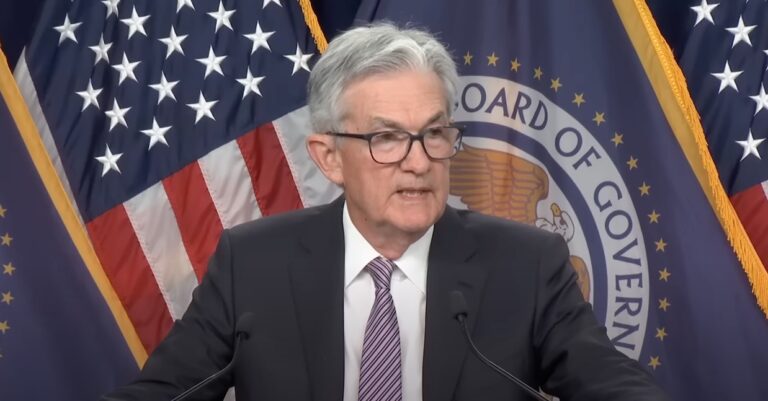In an interview on CNBC on August 19, Ed Yardeni, the Founder and President of Yardeni Research, shared his thoughts on the Federal Reserve’s likely monetary policy moves as the September 2024 meeting approaches. Known for his keen market analysis and prescient economic forecasts, Yardeni presented a detailed perspective on why he expects the Federal Reserve to implement a 25 basis points rate cut—a move he describes as “one and done.”
The Market’s Dovish Sentiment and Anticipated Rate Cut
Yardeni began by acknowledging the current sentiment in the markets, which he characterized as “very dovish.” This term, in the context of monetary policy, refers to the expectation that the Federal Reserve will adopt a more accommodative stance, particularly in light of recent economic data. The market, according to Yardeni, is pricing in the likelihood of a rate cut, with expectations ranging between 25 and 50 basis points. However, Yardeni firmly believes that a 25 basis points cut is the most probable outcome, aligning with the market’s dovish stance but suggesting a cautious approach by the Fed.
He explained that this anticipated rate cut is likely to be a singular action—hence his description of it as “one and done.” Yardeni argues that this modest cut will be sufficient to address current economic conditions, providing a boost without necessitating further reductions in the near term.
Economic Performance: Balancing Growth and Moderation
Yardeni provided a nuanced analysis of the broader economic landscape, highlighting both strengths and potential concerns. He noted that the U.S. economy is performing well overall, with key indicators suggesting resilience despite some areas of concern. For instance, inflation appears to be moderating, a crucial factor that supports the case for a more measured approach by the Federal Reserve. The labor market, another critical indicator, continues to show strength, further reinforcing Yardeni’s belief that the economy is not in need of aggressive monetary easing.
He acknowledged that some market participants were alarmed by recent employment reports, which seemed to signal potential weakness. However, Yardeni attributed much of this to temporary factors, such as weather-related disruptions, rather than a fundamental shift in economic conditions. He pointed out that other indicators, such as single-family housing starts in the South, took a noticeable dive, but these were likely anomalies rather than harbingers of broader economic decline.
Yardeni’s overall assessment is that the economy is “alive and well,” with enough momentum to justify a modest rate cut but not the more drastic measures that some more dovish voices might advocate for. He believes that by the September FOMC meeting, the Fed will have enough data to support this more balanced view, leading to the implementation of the 25 basis point rate cut.
The Dichotomy Between Industrial and Consumer Economies
Delving deeper into the economic analysis, Yardeni highlighted an interesting dichotomy that has emerged between the industrial and consumer sectors. He described the industrial economy as experiencing what he termed a “growth recession.” This term refers to a period where growth slows down but does not contract enough to be classified as a full-blown recession. Yardeni explained that this phenomenon is particularly evident in the goods economy, where demand surged dramatically following the end of pandemic lockdowns, only to plateau rather than plummet.
This plateauing of demand, Yardeni argues, is not necessarily a negative development. Instead, it represents a return to the pre-pandemic growth trend, which was disrupted by the unprecedented spike in demand during the pandemic. As such, while some indicators for the goods economy might appear weak at first glance, Yardeni interprets them as signs of normalization rather than decline.
On the other hand, the consumer economy has remained robust throughout this period. Yardeni pointed out that consumer demand, especially in services, has continued to thrive. This sector’s resilience has been a key factor in sustaining overall economic growth. Notably, technology now accounts for a significant portion—about half—of capital spending, further driving growth in the services sector. Yardeni’s analysis suggests that as long as consumer spending remains strong, the economy can weather the slowdown in the industrial sector without slipping into a broader recession.
Investment Strategies: Opportunities Beyond the ‘Magnificent 7’
Turning to investment strategies, Yardeni addressed the recent performance of the so-called “Magnificent 7” stocks—major tech giants that have driven much of the market’s gains in recent years. While these stocks have garnered significant attention, Yardeni suggested that investors might want to look beyond them to the broader S&P 500.
He pointed out that while the “Magnificent 7” have indeed performed exceptionally well, there are still plenty of opportunities among the remaining 493 stocks in the S&P 500. He argued that these stocks, while perhaps not as glamorous, have also seen solid performance and could continue to offer attractive returns as the market broadens. Yardeni’s emphasis on diversification within the S&P 500 reflects his belief that the market’s growth potential extends beyond just a handful of high-profile companies.
However, Yardeni also expressed caution regarding smaller and mid-cap stocks. He noted that the excitement surrounding these stocks was largely driven by expectations of significant interest rate cuts, which he does not foresee materializing beyond the anticipated 25 basis points cut. As such, he suggests that investors temper their expectations for these sectors, as they may have already priced in more aggressive monetary easing than what is likely to occur.
Market Reactions and Buying Opportunities
As the interview concluded, Yardeni addressed the potential market reactions to the Federal Reserve’s actions. He acknowledged that if the Fed’s decision to cut rates is perceived as less dovish than the market expects—perhaps if the cut is only 25 basis points rather than 50—there could be a short-term sell-off. However, Yardeni views such a scenario as a potential buying opportunity. His overall assessment is that the economy is strong enough to support continued market growth, even if the Federal Reserve opts for a more measured approach.









